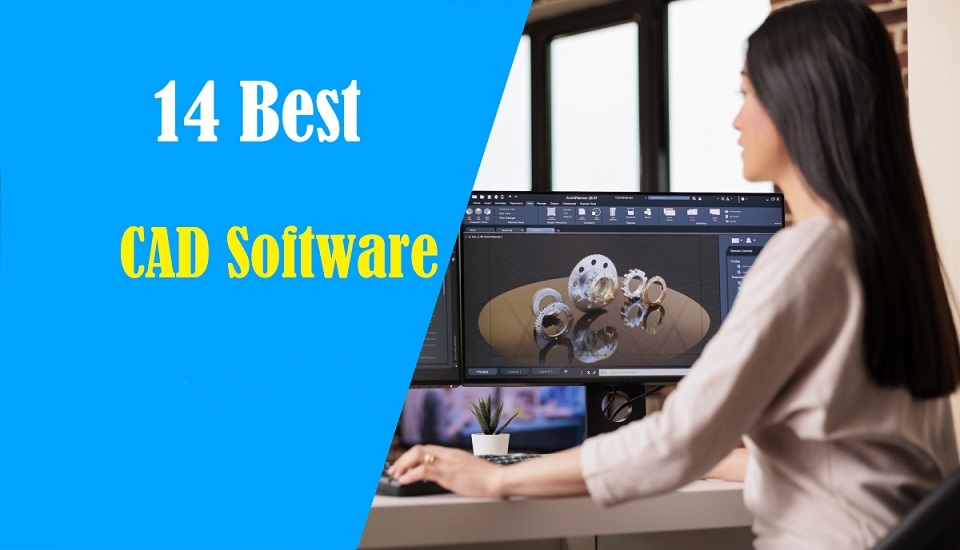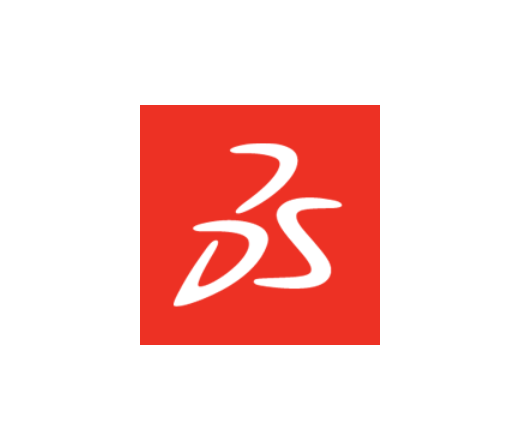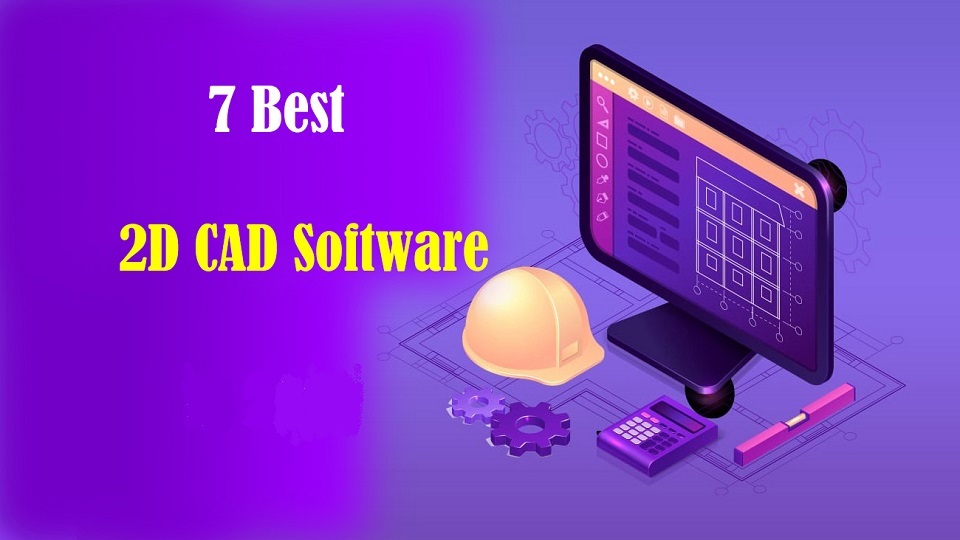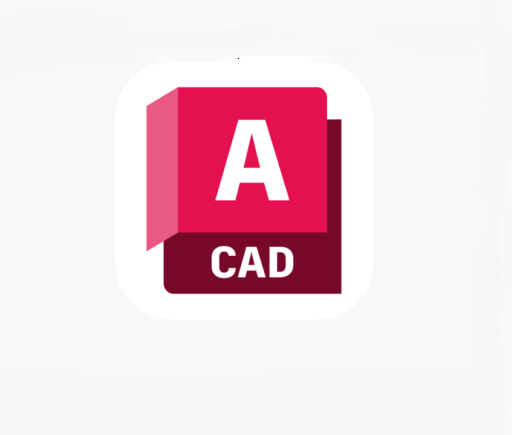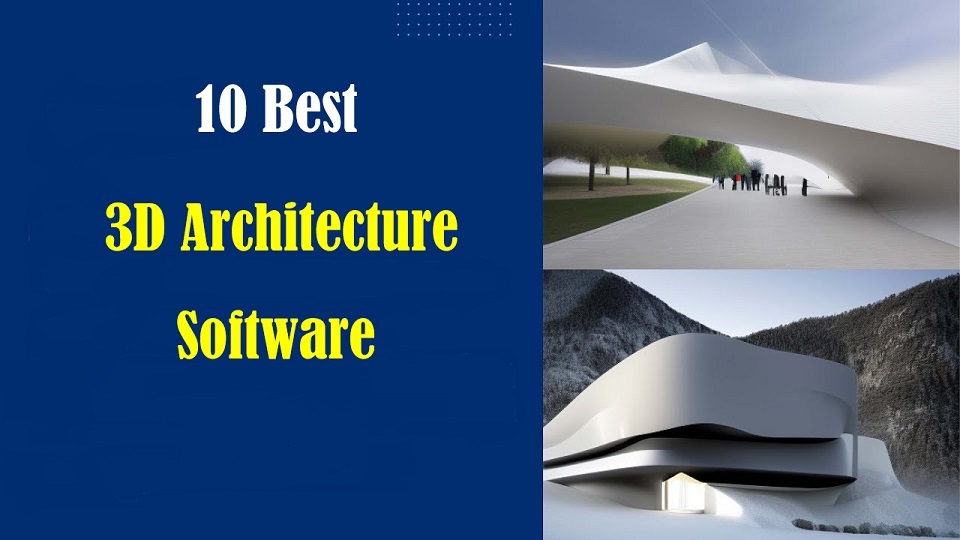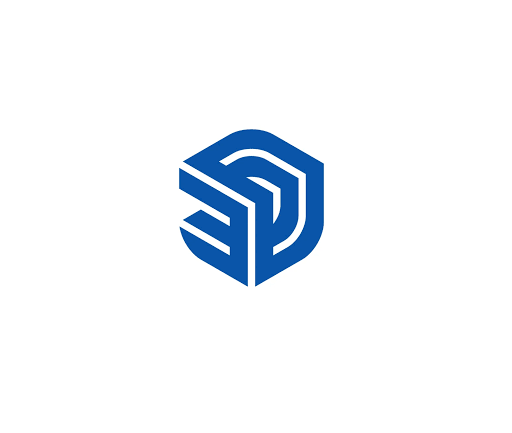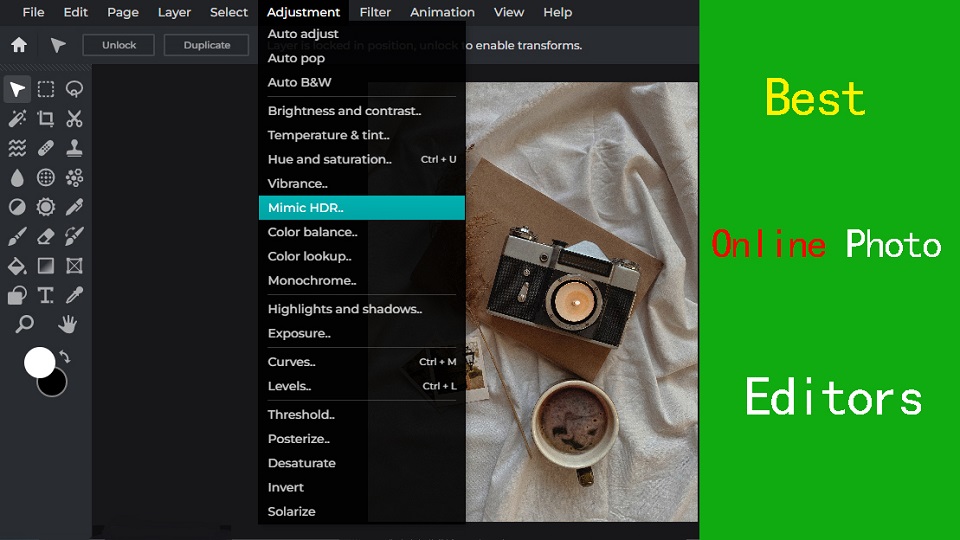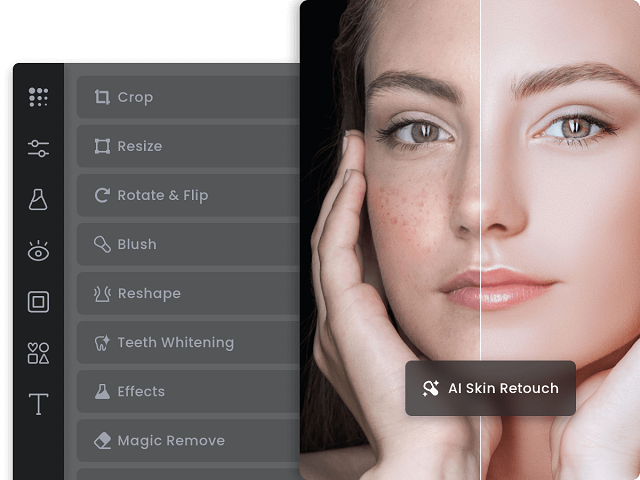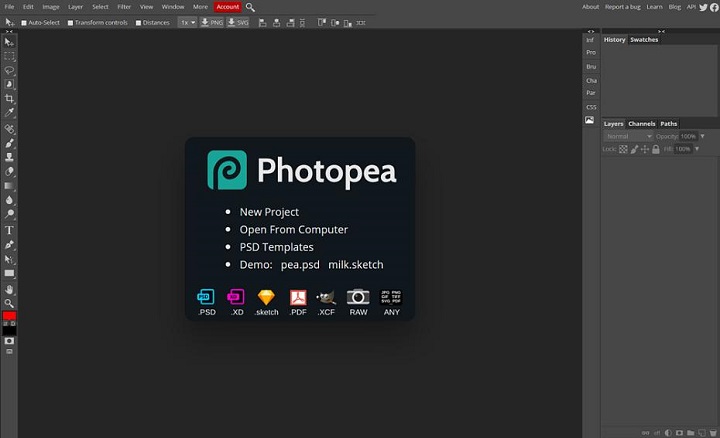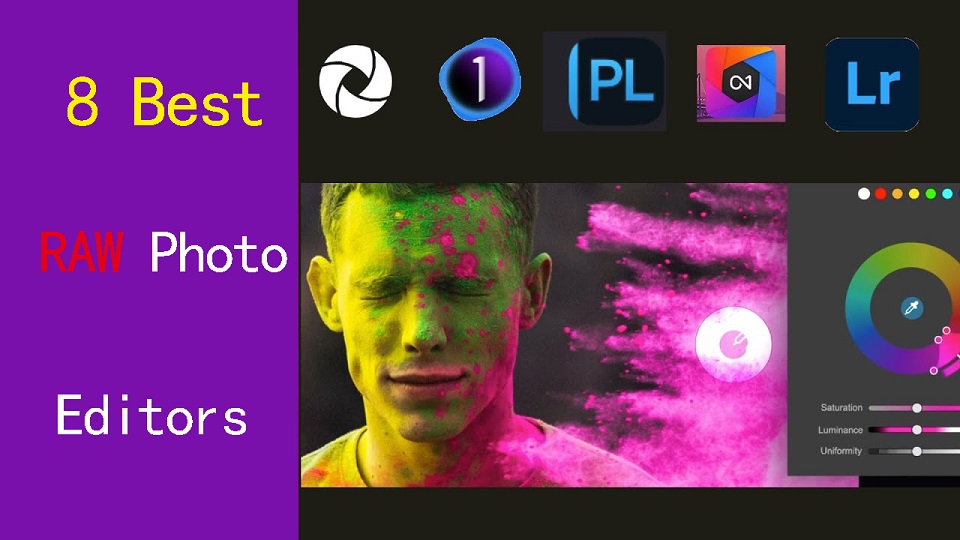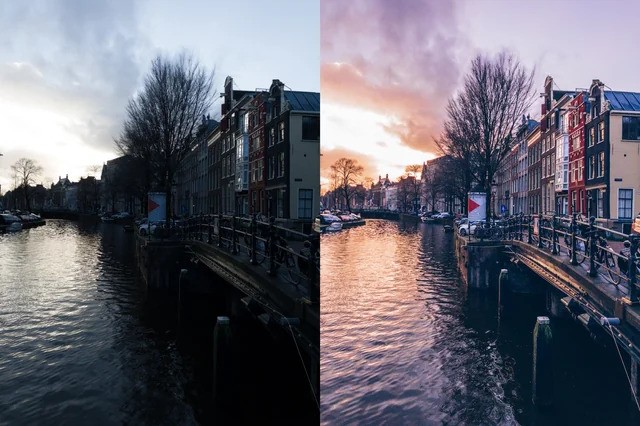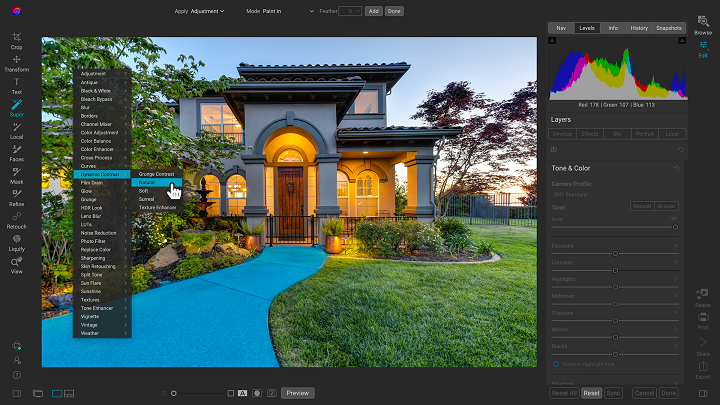Creative devices and apps review
29.02.2024., četvrtak
The best Professional 3D CAD Software
If traditional paper and pen drafting methods are not producing the accurate drawings you need, then you need to switch to quick and modern CAD software. CAD has revolutionized the design process, significantly reducing development time, enhancing collaboration, reducing design cost, improving design quality, and enabling innovative and efficient solutions. CAD has become an integral factor that moves the world forward. It lets you design everything from tiny pieces of electronic equipment to large airplanes, buildings, and more. But how do you choose the best 3D CAD software for your needs? There are many options and alternatives available, each with its own features, advantages, and disadvantages. Different CAD systems are tailored towards certain industries, with crossover and competition between the various CAD software companies. While it can be worthwhile to invest in a more professional-grade CAD program, you don't always need to dish out tons of cash if you're just starting out. Here, https://pctechtest.com will go over a brief introduction to top 14 free and paid CAD software in the market to help you find the one that suits your style, budget, and goals. What is Computer Aided Design (CAD)? CAD refers to the use of computer software and systems to create, modify, analyze, and optimize designs for a wide range of products, structures, or systems. CAD technology allows designers, engineers, architects, and other professionals to create precise and detailed 2D or 3D models of their designs, which can be used for visualization, analysis, simulation, and manufacturing purposes. CAD software provides a digital environment where designers can draft and manipulate geometry, apply various materials and textures, define dimensions and constraints, simulate real-world conditions, and perform complex calculations. These tools offer a more efficient and flexible alternative to traditional manual drafting methods, allowing for faster design iterations, improved accuracy, and the exploration of different design options. CAD systems are extensively used across various industries, including mechanical engineering, architecture, automotive, aerospace, industrial design, electronics, and many others. They play a crucial role in the product development process, enabling designers to conceptualize ideas, collaborate with team members, test and validate designs, and generate technical documentation necessary for manufacturing or construction. Some common features and capabilities found in CAD software include: 2D and 3D modeling: Creating detailed representations of objects or structures in two or three dimensions. Parametric modeling: Defining relationships and constraints between different parts of the design, allowing for easy modification and updating of the model. Assembly modeling: Building complex assemblies by combining multiple components and defining their relationships and interactions. Simulation and analysis: Performing virtual testing and analysis of designs to evaluate factors such as structural integrity, motion dynamics, fluid flow, thermal behavior, and more. Rendering and visualization: Generating realistic images or animations of the design for visual representation and communication purposes. Drafting and documentation: Generating accurate technical drawings, annotations, and documentation required for manufacturing, construction, or fabrication. 14 Best Professional 3D CAD Software for All Levels
A proper software is a valuable tool to address your pain points during the design process. Here are some of the most popular and highly regarded CAD software options you can use in 2024. We'll be digging deep into each software to help you decide which one works best for you. 1. Solidworks SolidWorks is a speciliazed parametric 3D CAD software and is very easy to learn and use. It enables users to create complex 3D models, assemblies, and simulations, making it popular in the manufacturing and engineering sectors. 2. AutoCAD AutoCAD is primarily a 2D drafting and documentation software widely used in various industries for creating precise 2D drawings, technical illustrations, and plans. It is often used in architecture, engineering, and construction (AEC) industries. 3. Fusion 360 Fusion 360 is a web based comprehensive 3D CAD, CAM, and CAE tool offered by Autodesk, with a free version available for hobbyists, students, and startups. 4. CATIA CATIA is a feature based surface modeling software, and is used to model anything from cars, aeroplanes, reactors etc. 5. Siemens NX Siemens NX is a powerful and user friendly computer-aided design (CAD), computer-aided engineering (CAE), and computer-aided manufacturing (CAM) software suite. 6. Solid Edge Solid Edge is a 3D CAD software that used to design and model 2D and 3D mechanical parts, as well as assemblies and their corresponding production drawings. 7. PTC Creo PTC Creo is a parametric, integrated 3D CAD/CAM/CAE solution for engineering purpose. 8. OnShape Onshape is professional 3D CAD software that allows you to create complex parts, assemblies, and detailed drawings all within your web browser. 9. Inventor Autodesk Inventor is a 3D mechanical design software that is used to create and validate product designs. 10. TinkerCad Tinkercad is a browser-based 3D design and modeling tool, ideal for beginners and hobbyists. 11. Rhino 3D Rhino 3D is a super versatile and pretty user-friendly 3D CAD program that can produce complex organic manufacturable design. It's not limited by industry type, so whether you're sculpting a fancy new jewelry piece or drafting up the next skyscraper, Rhino's got your back. 12. FreeCAD If you are looking for a free and open-source parametric 3D CAD software, I would recommend FreeCAD. It is a powerful and versatile tool that can be used for a variety of projects. 13. OpenSCAD OpenSCAD is a text-based CAD software that is used to create 3D models from parametric descriptions. 14. SketchUP SketchUp is a great 3D sketching tool which is very easy to pick up and get started with. Is a drawing tablet good for CAD like Fusion360? 3D CAD software is designed around mouse clicks and keyboard shortcuts. No CAD software has optimized user interfaces for pen usage. But For any digital art painting work, a good pen+tablet is a massive upgrade over a mouse. Related Posts: XPPen Star G430S vs Huion H420X Comparison, Huion Kamvas 13 vs Wacom One display Comparison, Huion Kamvas Pro 24 vs Wacom Cintiq Pro 24 Comparison. Conclusion The best software makes it simple and easy to get your work done with the least fuss. Choosing the right CAD software depends on your specific needs, industry, and level of expertise. This list of 14 popular CAD systems is by no means exhaustive, however, it gives you a general idea of some of the more commonly used CAD systems. It's a good idea to try out different programs and see which one works best for you. Furthermore, all the software here is possible to find great tutorials and guidance online. CAD software can be expensive, but it's a necessity if you work in a field like architecture, design, or engineering. If money is tight or you are just starting out, the free options mentioned will fulfil your requirements. A number of these software in this list offer inexpensive student versions, which should come as a boon for learners. Ultimately, Whether you're an architect, engineer, or designer, discover the best CAD software that aligns with your specific needs and empowers you to bring your creative visions to life efficiently and effectively. If you think we missed out on any good CAD software, let us know in the comments below. Source: https://pctechtest.com/best-cad-software |
25.02.2024., nedjelja
What is the best CAD software for 2D drafting?
Long gone are the days of sketching, erasing, and tracing designs on large drafting tables under uncomfortable fluorescent lighting. CAD (Computer-Aided Design) software have transformed the design phase in the engineering, architectural, construction, and manufacturing domains. The use of CAD softwares for 2D and 3D modelling simplify the old drafting process and also make design process more time efficient. Depending on your chosen CAD software, you can design and work with anything from architectural drawings to electrical drawings to mechanical schematics. In general, CAD software can be separated into two categories: 2D CAD software and 3D CAD software. Which type of software you use will come down to the product you're trying to make. Despite the widespread use of 3D CAD models, the need for 2D drawings is evident for engineering CAD designs. It's still a valuable tool in situations where a full 3D model isn't required. Looking for the best 2d cad software? Not sure which option is for you? Need some free cad drafting software? Look no further! pctechtest.com have put together a list of top 7 best free CAD Software for 2D drafting. All of these programs get good marks for how easy they are to use, how well they work, and how happy their customers are with them. Whether you want a Premium 2D CAD program or just a free one to get started with, one of these 7 options is sure to work for you. What is the advantage of 2D over 3D CAD drafting? Drawing the projected views of an object on two planes (x and y-axes) without creating a 3D model is known as two-dimensional computer-aided design, or 2D CAD. This contrasts with 3D CAD, where the projected views are generated using a 3D model of the object on three planes (x, y, and z-axes). 2D CAD solutions are far more cost-effective than advanced 3D CAD, so it's a very cost-effective alternative to 3D CAD modeling. 3D CAD Programs offer numerous functions for the designer, which many of them are not required. On the other hand, 2D CAD tools contain only the essential functions, which are easy-to-understand, learn and operate. Formatting is simple, as you are working with. DWG extensions exclusively. Sharing your information and data with others is an absolute breeze, and you don't have to worry about compatibility issues. 2D is often faster than 3D for quick changes and minor projects. If time is of the essence and you will not require elaborate 3D models or renders later, stick to 2D. 7 Best 2d CAD Software Current Now
The best 2D CAD software has tools for annotating, drafting, and drawing, as well as tools for working together to define locations, objects, measurements, and more so that your projects can be finished. All the 2D CAD tools that we have listed below come with their fair share of pros and cons. Therefore, the best CAD software for you will vary based on your requirement. 1. AutoCAD AutoCAD is a widely used computer-aided design (CAD) software that allows architects, engineers, and designers to create 2D and 3D models. 2. BricsCAD BricsCAD is often praised for its affordability and compatibility with AutoCAD, making it a cost-effective choice for those familiar with AutoCAD workflows. 3. Draftsight DraftSight is a professional-grade 2D solution for creation, editing, and markup for 2D drawings and design. 4. LibreCAD LibreCAD is a free, open-source, two-dimensional 2D CAD program. It can be used to make 2D drawings that are easy to moderately complex. 5. QCAD QCAD is an excellent free 2D CAD software that offers a rich set of drawing tools, and even its Professional version is quite affordable with a one-time purchase. 6. NanoCAD nanoCAD serves as an economical 2D CAD software for DWG editing, providing a cost-effective solution without compromising on quality. 7. TurboCAD TurboCAD constitutes excellent 2D CAD software that appeals to a wide range of users, from inexperienced beginners to expert users. Can I use any drawing tablet for CAD ? A drawing pen tablet for architecture is definitely usable, but the only advantage over a mouse is the lack of wrist strain. on the other hand, The mouse is going to work much better for you. Typically if you're drawing things up in a CAD software like AutoCAD, you place points to make curves rather than sketch lines free hand so a mouse will allow you to place the points and then move them to adjust your curves more than adequately. But drawing tablets are better to draw or edit photos, write, 3D sculpt, annotate PDFs, check email, and CA activities on site. Related Posts: ipad pro vs surface pro, bluetooth graphic tablet, pen display tablet, illustrator drawing tablet . Conclusion 2D CAD software is a very well-known and heavily used technology nowadays. It has a huge significance in our day-to-day life. The best 2D CAD softwares are capable tools for laser cutting, CNC machining, floor planning, technical and mechanical drawings in engineering projects, and PCB design where only an overhead is required. Each of these 7 solutions above is suited for a given function or industry, you can select the best one for your needs and budget. Once everything is set up and you have got to grips with the program and all the features, It can save you massive amounts of time and cut production costs. Do share your thoughts with us using the comments section below and don't forget to share this article. Source: https://pctechtest.com/best-2d-cad-drafting-software |
17.02.2024., subota
Best Free 3D Software for Architecture Design
Technological evolution overthrew the pen and paper method of labor. Architecture software has become an integral part of the design and construction industry. Architecture software is used for a wide range of purposes, including 2D drafting, 3D modeling, building information modeling (BIM), rendering and visualization, project management, cost estimation, and more. Architecture software provides architects, engineers, and other professionals with the tools they need to create efficient and effective designs. It enable users to design buildings and structures as well as their components in 3D, annotate models with 2D drafting elements, and access building data from the database of building models. It provides a platform for designers to create, share and collaborate on their ideas, as well as to simulate the impact of different design decisions on the building's performance. Since architectural development is a fairly complicated process that encompasses multiple different stages of modeling, it has a massive number of software solutions available on the market for different purposes and end goals. As such, choosing the correct one becomes a burden for a lot of people. That's why we've created this comprehensive guide to help you make the right decision when it comes to buying architecture software. We'll cover the different types of software available, the features to look for, and the price to compare. We'll also provide tips and advice on how to get the most out of your purchase. Whether you're a professional architect or a student just starting out, this guide will provide you with the information you need to make an informed decision. What is 3D architecture software? 3D architecture software includes features such as 3D modeling, computer-aided design (CAD) tools, rendering and visualization, so users can design virtual tours and visualize structures. These tools allow multiple designers and architects to collaborate and co-edit designs via virtual 3D models, improving project management, and reducing errors in construction. What's the Difference Between CAD and BIM? Architects and design studios are increasingly turning to two main types of architecture software to design and build projects: BIM and CAD. CAD (Computer aided design) is the process of using computers to help with the design process of a building, allowing CAD designers to create higher-quality drawings more quickly. In the AEC (architecture, engineering, and construction) industry, CAD is typically used for two-dimensional designs such as floor plans. It can also be used to create detailed 3D models of buildings and structures. BIM software contains tools to plan and track various stages in the lifecycle of a building, from concept to construction as well as from maintenance to demolition. The use of BIM allows architects, contractors and engineers to work together throughout the project using the same database and building model. Although CAD is a powerful tool, it lacks the data integration and collaborative approach of BIM. BIM can makes the most of the accuracy of CAD and applies it to real-life dimensions and specifications. Which software or plugin is best for architecture rendering? Architectural rendering software is a tool used by architects and designers to create images that simulate how a building or structure will look in the real world. It allows designers to more accurately identify problems in the developmental stages of a design as well as more effectively communicate design ideas with clients. There is a wide range of software available for architectural modeling and rendering. Some of the best software programs in this field include Enscape, V-Ray, Lumion, and twinmotion. These programs allow architects to create detailed 3D models of buildings and render them with realistic lighting and effects. Do you think drawing tablets are useful tools for architects? Graphic tablets with pen are considered the commonly utilized devices by designers and architects to assist in creating innovative designs. You can use a digital pen for sketching over quick renderings to explore ideas, sketching new projects from scratch, the process is more enjoyable for architects. In addition, the architecture design work can be completed with efficiency by utilizing a lesser amount of time. So we recommend you get a drawing tablet for architecture design. Related Posts: Standalone Pen Tablet, Drawing Tablet with Screen, Wireless Graphics Pad. 10 Best 3D Architecture Software
Below, we'll take a closer look at 10 Best 3D Architecture Design Software in 2024, their features, benefits, pricing, and target audience. you will definitely find something here. We've tried to showcase many different examples of solutions that could be useful for architects in specific situations and several solutions suitable for pretty much everything. 1. Revit 2. Archicad 3. AutoCAD 4. Sketchup 5. Chief Architect 6. 3DS Max 7. Rhino 8. Vectorworks 9. Civil 3D 10. CATIA Conclusion Professional architecture software is an indispensable working tool for architects and designers. With the right architecture software, you can streamline your workflow, increase productivity, and create stunning designs. Ultimately, you'll want to select a solution (or solutions) that align with your day-to-day tasks and make your life easier. Whether you need an architect app that can help you generate more accurate floor plans or sell your ideas to potential clients, the apps outlined above are a great place to start. The best architecture software will depends on your specific needs, including the type of project, level of expertise, and budget. Start exploring these architectural design tools and let your architectural visions take shape! Source: https://pctechtest.com/best-3d-architecture-design-software |
05.02.2024., ponedjeljak
The Best Free Online Photo Editors
If you're looking to quick edit your photos, but you don't want to download software to do so, then an online photo editor that runs directly from your browser might be a good fit. Luckily, There are plenty of online photo editors available, fast, convenient and many of them are free, perfect to match your skill level and needs. You'll find that some are great for improving selfies, others are better at adding text, and some have features found in professional software like Photoshop. Which online photo editor to use? With so many editors available, making a choice can be difficult if you don't know the benefits and features of each app. Fear not, as we've created a handy guide and a list of the 8 best online photo editors to help you decide which one is right for you. Why do you need an online photo editor?
The Installed desktop photo editing apps like photoshop may be too much for those who aren't power users or professional photographers. If you just need to touch up holiday snaps and crop and resize the occasional business asset, the online photo editors will cater to your every need. Additionally, if you use an OS that doesn't run the app you need, such as ChromeOS and Linux, then an Online Photo Editor will be a boon. Online photo editors are usually free to use, and provides access to various basic photo editing features. 8 Best Online Photo Editors
Explore the 8 best online photo editors available now, each offering unique features and tools to enhance your images effortlessly. 1. Pixlr Pixlr stands out with its powerful features and user-friendly interface, making it a top choice among popular photo editing software. 2. Photoshop Express Adobe Photoshop Express is packed with features that help improve photos significantly. 3. Photopea Photopea is an online image editor that closely resembles Adobe Photoshop in terms of functionality and layout. It supports PSD files, making it a great choice for users familiar with Photoshop. 4. PicMonkey PicMonkey is an easy-to-use online photo editor with basic editing features and filters. 5. Canva Canva offers a variety of design tools including photo editing. It's excellent for creating social media graphics and simple designs. 6. Fotor Fotor offers a variety of editing tools for photos, collages, and graphic design. It has a user-friendly interface and offers pre-made templates as well. 7. BeFunky BeFunky offers a fun and easy-to-use interface for editing photos. It also offers tools for creating collages and graphic design projects. 8. PicsArt Picsart PicsArt is a super powerful online photo editor, which provides us all useful tools to edit photos in very easy steps. How to Choose the Best Online Photo Editor?
Here are a number of key factors worth to consider before you make your choice User-Friendly Interface If you are a beginner, Opt for an editor with a user-friendly design for a smooth and enjoyable editing experience. Feature Versatility Look for a balance of powerful features and simplicity that matches your skill level and editing needs. Some online editors has AI-powered features that simplify complex tasks like background removal and object recognition. One-click presets and automated adjustments also save a lot of time. Accessibility and Integration Choose an editor that seamlessly fits into your workflow, allowing you to access and integrate your work across various devices for flexibility and convenience. Budget and value It’s clear that all online photo editors have a free version with limited features and can be a great choice depending on your particular needs. If you have more money to invest or want to access the advanced features, then subscribe to a premium version to unlock other extra advantages may be the best option. Conclusion After weighing up the 8 different online photo editors available, It’s clear that all have their own unique advantages and can be a great choice depending on your particular needs. Whether you need to retouch a portrait, add text to an image, or create a composite image, you can find something fitting for any task. It is worth noting that if your photo editing needs are more complex than casual use or basic touch-ups, then paying for a subscription of the photoshop or other premium software may be the best option. So, the next time you need to edit your photos, give one of these online photo editors a try and see the difference they can make! Related Articles: Best Business Laptops, Inkscape Graphic Tablets. FAQs Are there any online RAW photo editors? Photopea includes a RAW photo editor. However, it has only exposure, temp tint, and contrast. Most online photo editors doesn't accept raw camera files, so you need to Convert your RAW image file to another format, like JPEG or PNG, to fix the problem. Desktop RAW Photo Editors like RawTherapee and Darktable can be used to edit and convert RAW files, and you can use them without paying anything. Online vs Desktop Photo Editor: which one is better? Online photo editors lack a lot of advanced functionalities that a full version of desktop photo editors like Photoshop, Affinity Photo, or GIMP provides. For users that are seeking something more advanced for complex projects, you may need a more professional image editing software. What is the best free online photo editor tool? There are some great free online photo editors like Photopea, Pixlr, Photoshop Express, PicMonkey, Canva, Fotor, BeFunky, PicsArt, etc. They generally offer you a free version with limited functionalities, the best one will depends on your favorites and needs. Do drawing tablet works with Online Photo editor like pixlr? By using a Pen Tablet for editing photos in an online photo editor like Pixlr, you can create illustrations, montages, manipulate photos and more. Tablets are really handy if you need to draw a mask on something, or doing other edits that require painting onto the image. If you just do spot edits and move sliders around for photo editing, it actually seemed to slow down your processing. Source: https://pctechtest.com/best-online-photo-editors |
02.02.2024., petak
Best free programs for editing RAW images
Experienced photographers know Shooting in RAW lets you capture a lot more details of the scene. But when it comes time to edit these files, you need a RAW photo editor capable of giving you top-quality results. Every RAW editing software processes images a little differently which can affect sharpness and color, including the Dynamic Range Optimizer (DRO) effect. From Adobe Lightroom to Darktable, there are a ton of RAW photo editors out there, and finding the right one can be tricky. Fortunately, We've got lots of experience, and came up with 8 best software for editing RAW photos, from free options to lifetime licenses. Whether you're a seasoned professional or just starting out, there is an option for you. What is a raw photo editor, and why should I use one?
A raw photo editor is program designed to process and enhance raw image files captured by digital cameras. With the power to adjust exposure, shadows, highlights, and more during post-processing, you can breathe new life into lackluster footage or transform good footage into stunning imagery. 8 Best software for editing RAW photos
Here are our top picks for programs for editing RAW files. We will briefly discuss each below so you can decide which program is best for you. 1. Adobe Lightroom Adobe Lightroom is the best photography workflow tool for serious enthusiasts who processing raw files and managing a large library of photos. 2. Capture One Pro Capture One is a professional-grade photo editing software that is known for its advanced color grading and editing tools. Many people prefer Capture One Pro for its richer rendering of raw images, but requires an effort to master. 3. DxO PhotoLab DXO Photolab is an amazing RAW photo editing app which allows us to add filters & effects. 4. On1 Photo Raw ON1 Photo RAW is the best all round photo editing software. This tool comes with great features such as an image organizer, Raw processor, layered editor, effects and so many best things. 5. Luminar Neo Luminar Neo is the most affordable and effective choice in terms of RAW photo editor for you. The Ai technology allows you to do complicated edits without the need to be a geek, or spend loads and loads of time on the boring bits of post production. 6. ACDSee Ultimate ACDSee Ultimate offers many powerful photo organizing and editing tools, but its interface can get overwhelming and importing is slow. 7. RawTherapee RawTherapee is a free, cross-platform raw image processing program. With its user-friendly interface and numerous features, it is a popular choice among photographers. 8. Darktable Darktable is a free and cross-platform alternative to Lightroom. I offers non-destructive editing, RAW processing, and a variety of tools for image enhancement. The interface isn't as intuitive as Lightroom, ant it seems not as fast as Lightroom at editing quickly a bunch of photos . How to choose the best RAW Photo editor?
Editing RAW images will vary greatly depending on the software you choose to use. To make sure you choose the right RAW photo editor for your needs, budget, and resources, consider the following features: Camera compatibility Make sure you choose software that supports your camera and lenses and provides custom manufacturer profiles. Camera compatibility is important for achieving accurate colors, maintaining fidelity in the details, and having access to customized tools. Hardware/OS Compatibility Before settling on what photo editing software you should use, it's vital to consider its compatibility with your operating system, graphics card, and processor. RAW Processing performance All RAW processing editors are NOT the same, so you should pay attention to its RAW processing capabilities, whether the RAW processor is good enough and how well it handles RAW images. Photography Editing Style Each photographer has a unique artistic style and needs different editing functionalities. There are photo editors dedicated to portrait photography, fine art photography, landscape and nature photography, or something else. Workflow A good workflow needs an easy-to-use interface and speedy performance. If you edit images from different places and devices, you might need cloud storage that can keep your pictures synchronized. Presets and filters A rich library of presets and filters can save you time and energy. You don't have to recreate the same style over and over again. Make sure that you choose a photo editor that includes a wide variety of presets and allows you to fine-tune them and save your own for later use. Digital asset management Photographers work with large sets of pictures. Besides batch processing, photo editor requires a good image management system, sharing capabilities, and efficient search tools. If you don't want to use separate software for organizing your images, choose professional photo editing software that provides this functionality. Make sure it allows you to label, rate, sort, share and search images. Price Most professional photo editors offer a free trial version. A perpetual license is a one-time purchase that gives you the right to use a software forever. With a subscription license, the customer pays monthly or yearly, and the vendor commits to delivering updates over time. If you're just starting out, a free program may be a much better choice than a more advanced one, even if, technically, it's not as good. Conclusion Your RAW editing software should be able to preserve the quality of the photo, have a user-friendly interface, and fast processing speed. Whether you're a hobbyist or professional, these are 8 of the best photo editing programs out there for handling RAW files. With Adobe Lightroom being convenient to most photographers, Capture One Pro and Luminar Neo bring in great technology to keep your workflow diverse. RawTherapee and DarkTable are two of the best free options and are very feature rich. Find one with the features that are most important to you and have fun! If one application alone is unlikely to meet your needs, You can use more apps simultaneously. Related Posts: Drawing Tablets for Photoshop, Best Graphic Design Laptops. FAQs What are the differences between JPEG and RAW file formats? RAW files are lossless and bigger, because they preserves the full data from your camera sensor, providing more flexibility for post-processing. In comparison, A JPEG image is essentially all that data compressed down into a smaller file size that's easier to share. What are some unique features in raw photo editors? Raw editors often offer advanced features like non-destructive editing, which allows you to adjust images without altering the original data. They also provide precise control over highlights and shadows, exposure, noise reduction, and lens correction. What are some free Free apps for editing RAW photos? There are 2 free and open source programs, RawTherapee and DarkTable that benefit photographers interested in investing in learning how to use them. It's a shame people do not realize how great these programs are but simply see they are free and assume they are not worth anything. What is the difference between raw editing and regular photo editing software? Regular photo editing software typically works with compressed image formats like JPEG, PNG, TIFF, etc. If you need to carry out detailed retouching and repair work, a Regular photo editing software like Photoshop, Affinity Photo, or Gimp is likely to be your first stop. Raw editors, on the other hand, work with unprocessed data from your camera, offering greater control over exposure, color balance, and detail. Do I need a pen tablet for RAW photo editing in Lightroom? There is much more control over the brush as pen tablets are pressure sensitive, so the harder you press the more effect you have. Pen tablets for editing photos are better if your doing a lot of masking, dodging, burning, touch-up and such in photoshop, and need to trace more complex shapes that are hard to do with a mouse. As for RAW photo editing in lightroom and alike, The sliders are done better with a mouse, for speed the mouse wheel or manually imputing numbers can be faster. If you do want to be faster memorising hotkeys & setting custom defaults help as well as a dual display setup. Additionally, If you have created a graduated filter in Lightroom, but need to erase portions, then the precision of a pen is invaluable. Source: https://pctechtest.com/best-raw-photo-editors |
